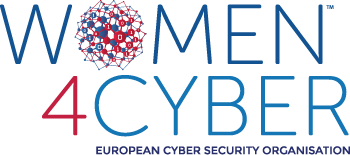
Workplace Diversity Through Recruitment: A Business Issue
On 15th January 2023, Gillian Arnold, Managing Director for Tectre, an IT Recruitment and Training company focused on supporting women in technical roles, delivered a training for ECSO’s HR Community which is supported by Women4Cyber.
According to an analysis released by the management consulting firm McKinsey&Company, the average share of women in tech is 22%. Although it may appear to be a good proportion, this average has been more or less the same for the past 25 years meaning that little progress is being made. It is worth noting that not all countries record the same data, with some recording higher or lower percentages of women in technical roles and the EU-27 country’s average being at 19%. More than ever, working on increasing the share of women in tech and cyber is now an economic necessity for Europe.
The business case for diversity
“Women in tech: The best bet to solve Europe’s talent shortage,” an analysis conducted by McKinsey for McKinsey Digital, highlights a tech talent gap of 1.4 million to 3.9 million by 2027 for EU-27 countries. Europe could tackle this talent shortage by doubling the share of women in the tech workforce, reaching about 45% (meaning an estimated 3.9 million additional women in tech) by 2027. This way, the talent gap would be bridged, and Europe would benefit from a GDP increase of as much as €260 billion to €600 billion.
In the late 1990s, data on the impact of diversity in the UK (as an example) were scarce, and there was no evidence of the business case for diversity. Therefore, people advocating for a change had little to contribute to the business case to convince managers to collaborate with them. The first paper of McKinsey’s “Women Matter” series, released in 2007, outlined the correlation between financial benefits and companies with diverse management teams. Indeed, thanks to many other analyses on the topic conducted by McKinsey, the benefits that diversity brings to companies (such as increased productivity, greater profit, enhanced company culture, , attracting and keeping the best staff, and better return on equity) are now widely known and proven. Moreover, the McKinsey Quarterly analysis clearly showed that companies and organisations with the most gender-diverse management teams were performing better on earnings before interest and tax, return on equity, and share price.
How to attract and retain women in tech
McKinsey’s analysis revealed that women’s participation in ICT disciplines drops drastically in tertiary education. Companies must first learn how to attract women in tech and retain them. This second task is probably the most difficult, and this is clear when looking at some data:
- Women occupy only 26.2% of senior management roles in tech firms in the US
- Women occupy only 5% of leadership roles in tech in the UK
- The % of women in tech-related careers decreased between 2018 and 2020
- 2/3 of women engineers currently leave the profession within 15 years
- 74% of women in technology jobs have experienced gender discrimination at work
Knowing that the significant drop-off points for women in European tech happen at the end of secondary education and workforce entry, we should foster the attraction of women in technical roles, starting with children in primary education, providing them with continuous guidance and support. Furthermore, in order to attract more women into the tech market, companies should start by debunking myths such as “girls don’t like/do tech” and look at the spectrum of recruitment and hiring (this includes welcoming job ads and descriptions, career pages, interview panels and formats, sleek onboarding processes, etc.), build an inclusive and welcoming external image of the organisation, link with different sources of diversity and make their efforts visible. Companies and organisations need to work to improve the internal HR procedures and train Senior Leadership Teams recruitment teams, and hiring managers in order to reduce biases and discrimination, and retain women in this field. Finally, it is also crucial to remember the power that the media and people in the public eye have in fostering change. In addition to visible role models within the industry, a female “cyber hero” on a tv show would do wonders to shift mindsets and encourage young girls and women towards cybersecurity educations and professions.
Join the European HR Community today to further explore this topic and help us make the business case for diversity!


